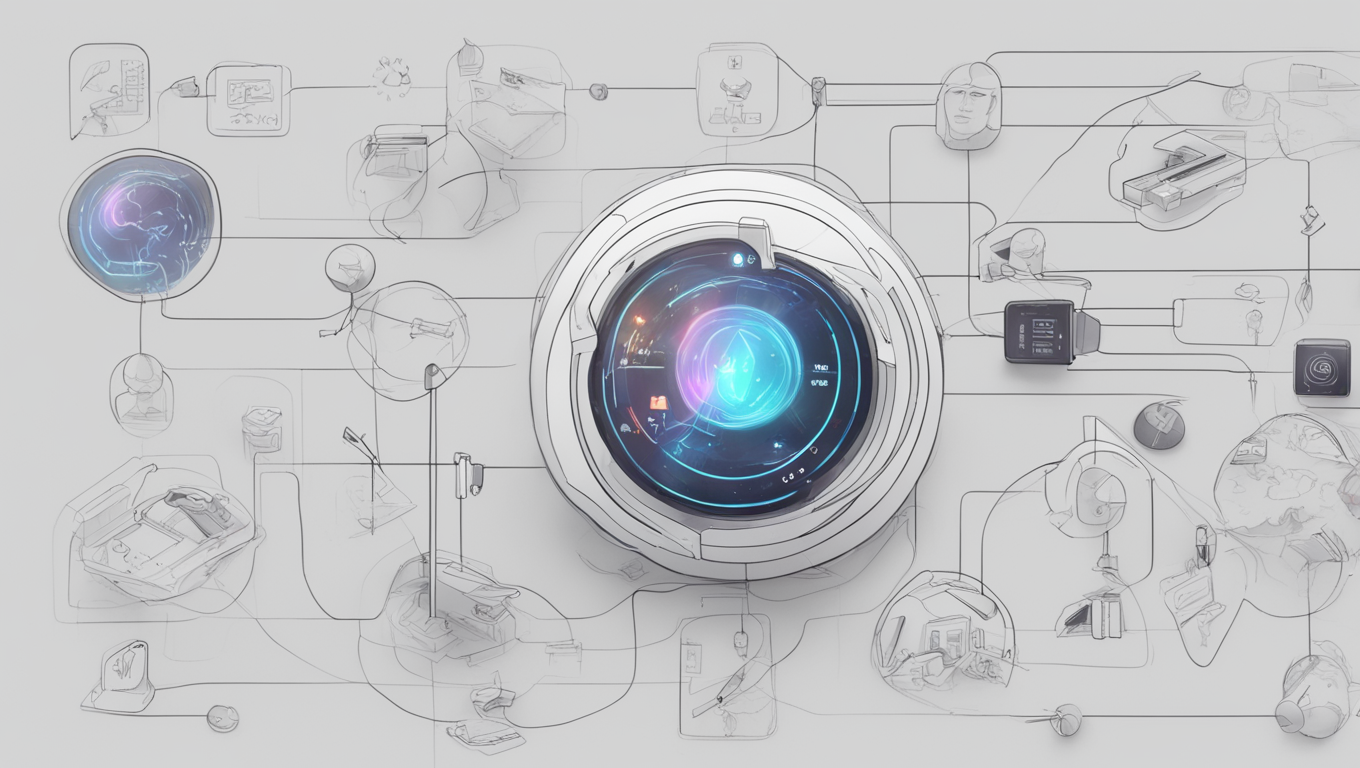The smartphone, a device that has become an integral part of our lives, might soon fade into AI-driven oblivion. Companies have been moving in this direction for years, but last week, Humane announced its AI Pin, which could be the biggest step towards a post-smartphone world. The AI Pin does everything a smartphone does and more, all while hiding itself from plain sight.
But this shift isn’t new. Back in 2015, a conversation with a top tech executive revealed a potential future where voice commands could handle most smartphone functions. Although Siri was the closest thing we had to it at the time, the idea started to gain traction. The release of AirPods and the rise of virtual assistants allowed us to interact with our smartphones without actually holding them in our hands. However, there was still the issue of the display.
In 2019, I stumbled upon a solution at the WWDC in San Jose. A three-dimensional screen was being projected from a small pod placed on top of an iPad. This concept fascinated me, despite its lack of privacy and personalization. The screen could be projected, and this wasn’t entirely new for smartphones – the Samsung Galaxy Beam had demonstrated a similar concept. But how do you interact with a projected screen?
Smartphone companies have been experimenting with gesture-based interactions for a while. While some of these experiments have been strange and impractical, waving hands to trigger a selfie has become commonplace. This year, Apple announced Double Tap, a feature that allows users to control aspects of the Apple Watch. Accessibility features in watches and smartphones have opened doors to a screen-less world where voice commands and gestures play a more natural role in user interaction.
Artificial intelligence can take this a step further by predicting our context and reducing the need for manual interactions. Imagine an AI-powered device suggesting replies to emails and messages, drafting new communications, or even giving suggestions for framing a picture from a camera embedded in glasses or a pin on your shirt. This integration of AI and cameras allows for a new level of interaction with personal technology.
Apple has already seen success with its camera-focused approach, with a significant portion of its revenue coming from services. The Humane AI Pin seems to be following a similar path, with users spending as much on the device in subscription fees within two years of purchase. AI-driven products like this will have subscriptions built into the essential part of the product, making it impossible to avoid.
The Humane AI Pin not only marks the rise of AI-led devices but also highlights the shift towards prioritizing services over products. The smartphone, in this future, becomes a secondary device primarily used for consumption. Although this could be the beginning of the end for the device that dominated the personal technology market for the past two decades, it also opens up possibilities for new and innovative technologies.
With hardware taking a back seat, software will become the driving force behind personal technology. A small, discrete pin could hold immense power, with AI doing our bidding in exchange for a monthly subscription. This direction signals a future where AI-driven devices become the new norm, and the smartphone becomes a relic of the past.
While the Humane AI Pin may not be the ultimate solution that we’ve all been waiting for, it serves as a stepping stone towards a future where personal technology is driven by AI. With innovation in the smartphone segment plateauing, this new device gives us a glimpse into what the not-so-distant future might hold. It’s a world where hardware becomes secondary, and software becomes the king, all while we adapt to a new way of interacting with our technology.





Use the share button below if you liked it.